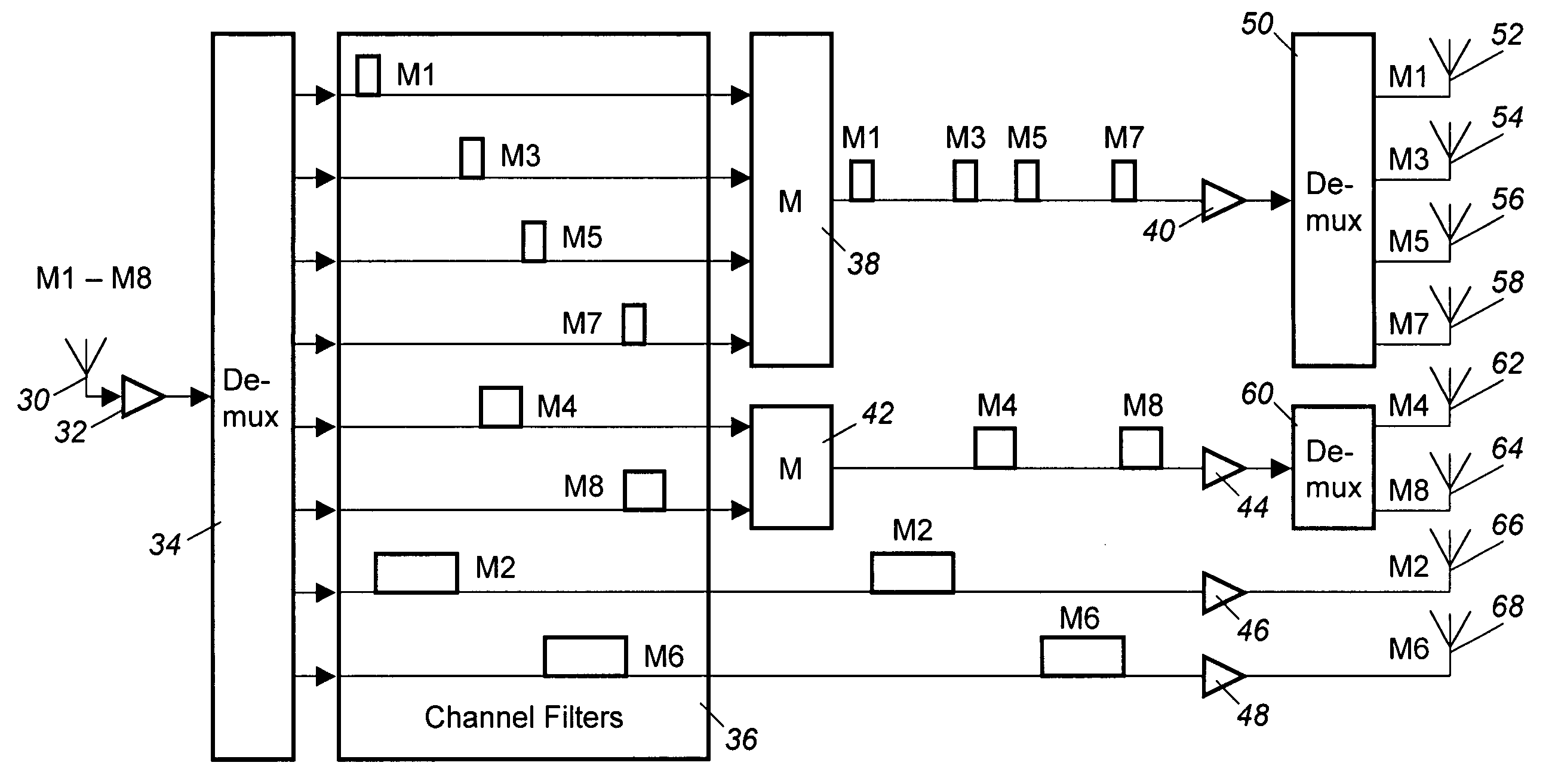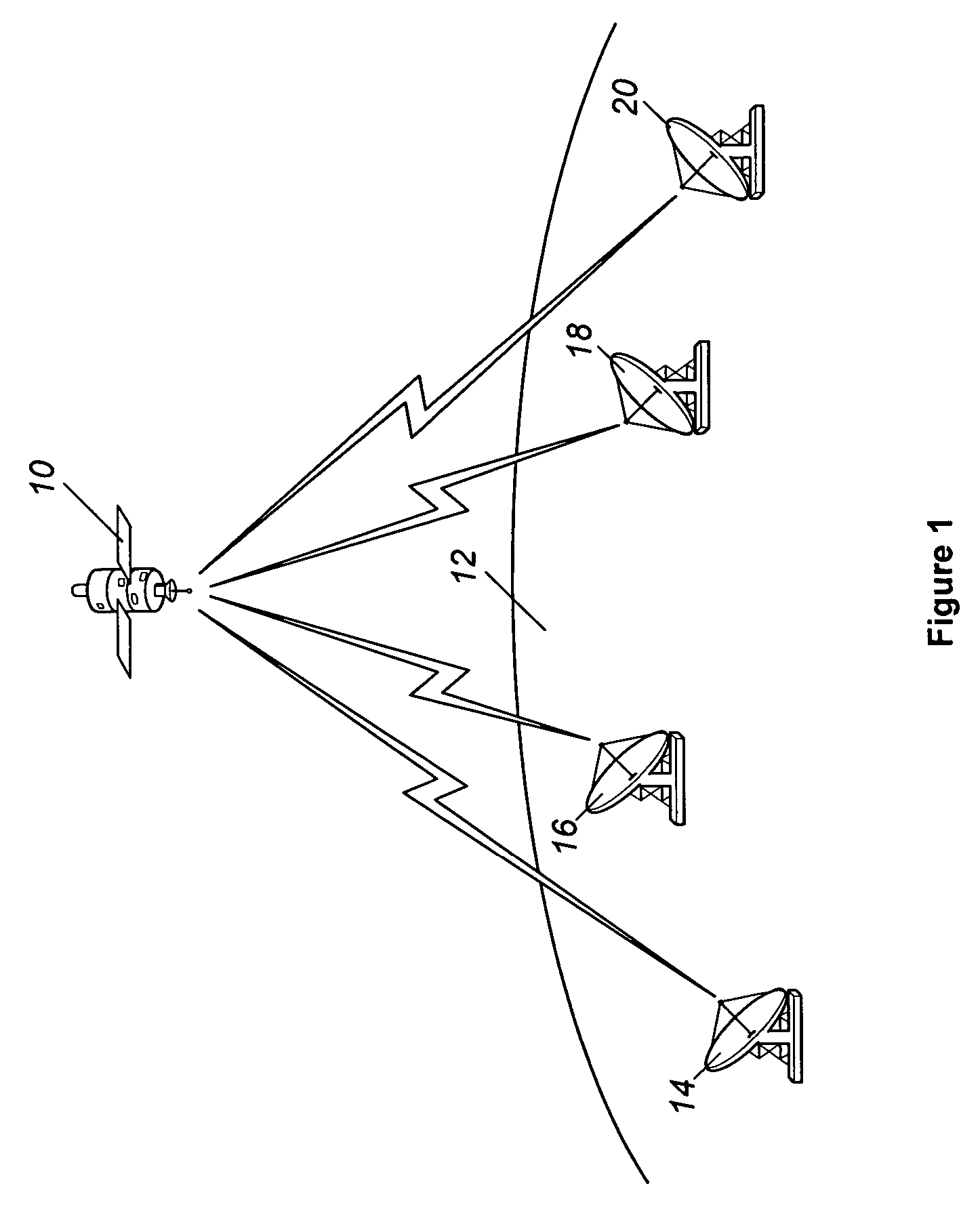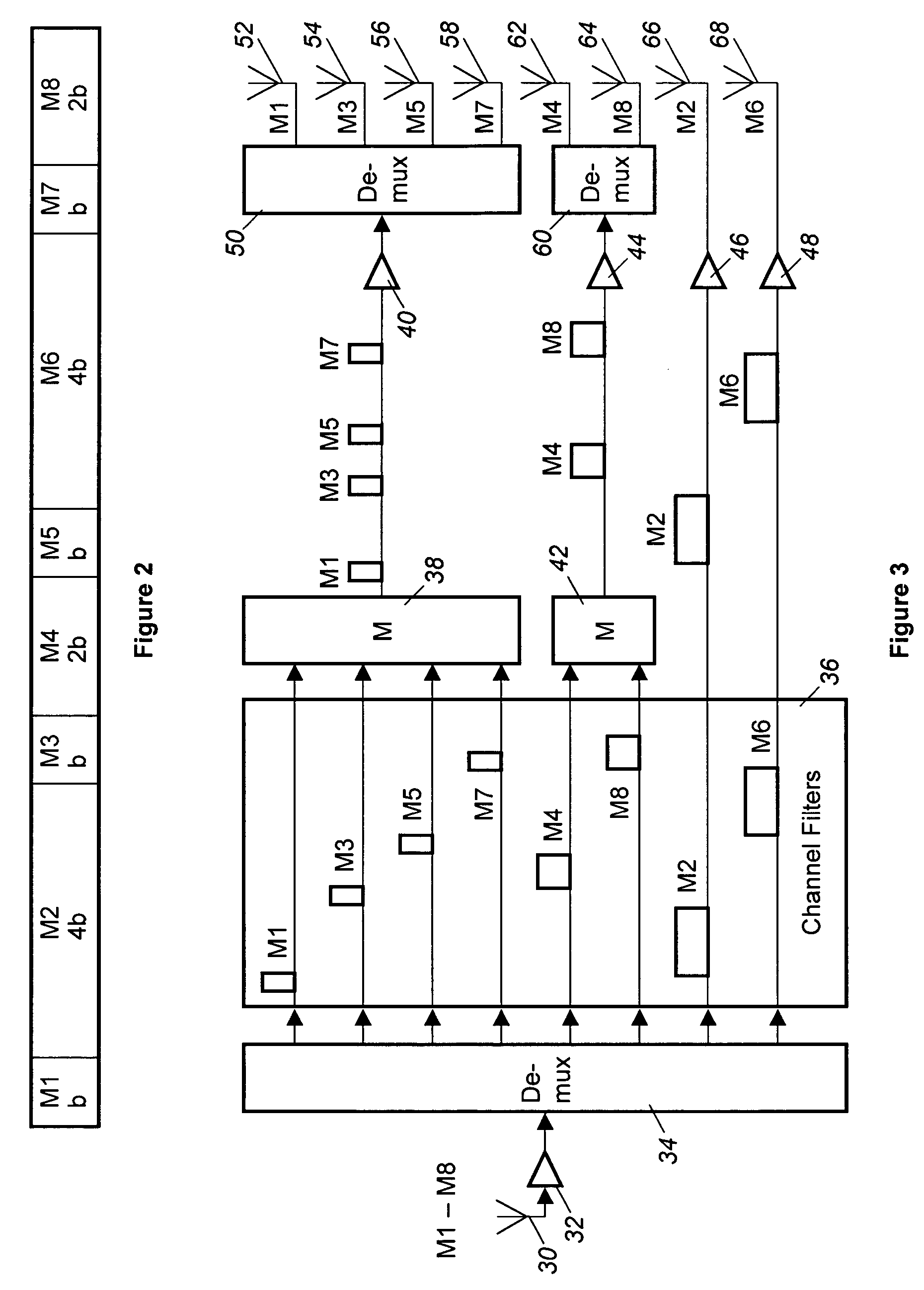Signal processing apparatus and method, and communication system utilizing same
- Summary
- Abstract
- Description
- Claims
- Application Information
AI Technical Summary
Benefits of technology
Problems solved by technology
Method used
Image
Examples
Embodiment Construction
[0012]FIG. 1 is a schematic representation of a preferred embodiment of a communication system operating in accordance with the present invention. A satellite 10 is operating in an earth orbit above the surface of the earth 12. A plurality of ground stations 14, 16, 18, 20 are capable of communicating through satellite 10. Thus, for example, ground station 14 might transmit a signal including a plurality of messages to satellite 10. Satellite 10 processes these messages and relays separate messages to appropriate ones of the ground stations 16, 18 and 20, as well as to other ground stations. Likewise, ground stations 16, 18, 20 might transmit a signal to satellite 10 with messages that are relayed to other ground stations.
[0013]FIG. 2 illustrates a typical allocation of bandwidth to N separate messages within a signal in accordance with a preferred embodiment of the present invention. Each of the N messages has a unique frequency band with an associated bandwidth, but more than one...
PUM
 Login to View More
Login to View More Abstract
Description
Claims
Application Information
 Login to View More
Login to View More - R&D
- Intellectual Property
- Life Sciences
- Materials
- Tech Scout
- Unparalleled Data Quality
- Higher Quality Content
- 60% Fewer Hallucinations
Browse by: Latest US Patents, China's latest patents, Technical Efficacy Thesaurus, Application Domain, Technology Topic, Popular Technical Reports.
© 2025 PatSnap. All rights reserved.Legal|Privacy policy|Modern Slavery Act Transparency Statement|Sitemap|About US| Contact US: help@patsnap.com



